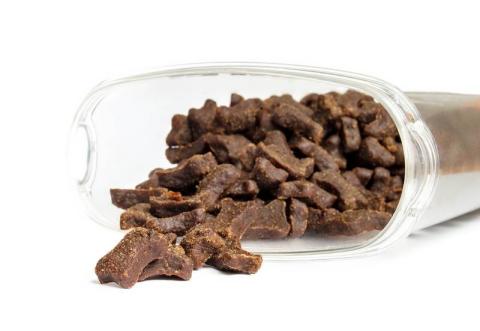
Published on October 10 by Olivia
Soft dog food is a popular option for many pet owners, especially those with dogs that have specific dietary needs, dental issues, or simply prefer a moist and tender meal. Whether your dog is a senior, a puppy, or recovering from surgery, soft dog food can be an excellent choice to ensure they receive the proper nutrition without struggling to eat. In this article, we’ll explore the benefits, types, and things to consider when choosing soft dog food for your canine companion.
Soft dog food refers to any type of dog food that is easy to chew and has a moist, tender texture. It typically includes wet or semi-moist food options. Unlike dry kibble, which can be hard and crunchy, soft dog food is designed to be more palatable and easier to eat, particularly for dogs with dental issues or picky eaters.
Soft dog food is available in various forms, such as:
There are several types of soft dog food available, each with its own benefits and considerations.

Canned food is one of the most common forms of soft dog food. It is highly palatable, rich in flavor, and contains a high percentage of moisture. Canned dog food typically comes in various flavors and formulas, including grain-free, high-protein, and specialty options for dogs with dietary restrictions.
Pros:
Cons:

Semi-moist dog food has a texture somewhere between kibble and canned food. It is sold in small pouches or packages and usually shaped into bite-sized morsels. While convenient and easy to serve, semi-moist foods may contain added sugars and artificial preservatives.
Pros:
Cons:

For pet owners who want full control over their dog’s diet, homemade soft food is a good option. You can prepare fresh ingredients like lean meats, vegetables, and grains, and cook them in a way that makes the food easy for your dog to chew and digest. This option allows for customized meals based on your dog’s specific dietary needs.
Pros:
Cons:
When choosing soft dog food, there are several important factors to consider to ensure your dog gets the best nutrition and health benefits.
Ensure the soft food you choose meets your dog’s nutritional needs. Look for options that contain high-quality protein sources, healthy fats, and essential vitamins and minerals. Avoid foods with excessive fillers, artificial additives, and by-products.
Consider your dog’s age, size, and health condition when selecting soft food. Puppies may need more calories and specific nutrients, while senior dogs may require food that supports joint health and is easier to digest. If your dog has a medical condition, such as kidney disease or allergies, consult your veterinarian for guidance on the best soft food for their condition.
Look for soft dog food made with high-quality, natural ingredients. Choose formulas with whole meats (such as chicken, beef, or fish) as the first ingredient, and avoid those with excessive grains, by-products, and artificial preservatives.
Soft dog food, particularly canned food, is often more calorie-dense than kibble, so portion control is important. Overfeeding can lead to weight gain or digestive issues. Always follow the feeding guidelines on the package and adjust as needed based on your dog’s activity level and size.
Canned and semi-moist dog food should be properly stored to prevent spoilage. Once a can is opened, it must be refrigerated and used within a few days. Semi-moist foods should be sealed tightly after opening to maintain freshness.
Soft dog food is a fantastic option for dogs that have trouble with dry kibble, whether due to dental issues, age, or picky eating habits. With various options like canned, semi-moist, and homemade food, there’s something to fit every dog’s needs. When choosing a soft food, consider the nutritional content, ingredient quality, and your dog’s specific dietary requirements. By making the right choice, you can ensure your dog enjoys a delicious and healthy meal that supports their overall well-being.
Discover More Content





